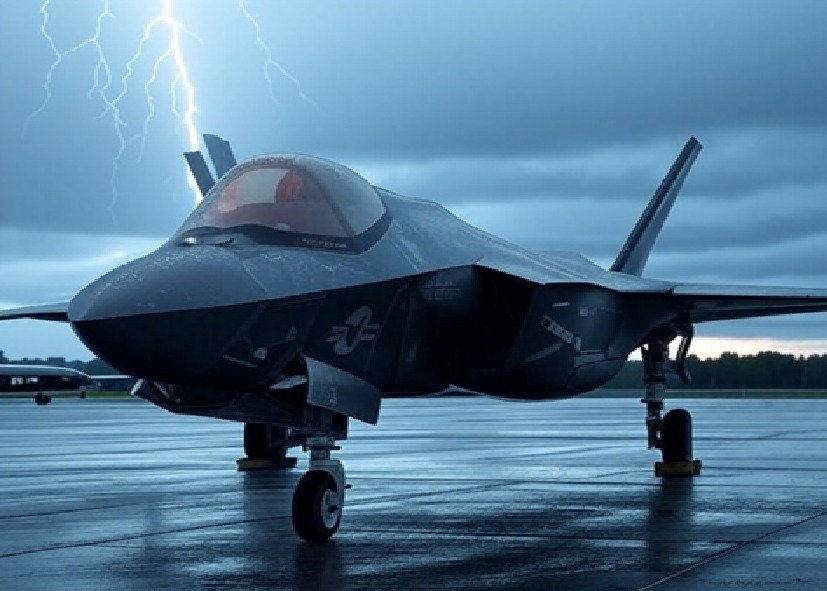The Russian Telegram Channel @The_Wrong_Side on September 23 posted a video purportedly showing an Iskander-M missile strike on the Motor Sich PJSC workshop in Zaporizhzhia.
Motor Sich production areas have been repeatedly struck by Russian missiles since the start of the Special Military Operation. The most recent strike is reported to have targeted the workshop where UAV components were being manufactured.
Earlier in the year, on April 5 RIA Novosti reported that Russian forces had struck the Motor Sich enterprise, where engines for military aircraft are assembled and military equipment of the Ukrainian Armed Forces is repaired.
RIA Novosti’s report was based on a Telegram Post by Vladimir Rogov, the head of the Zaporozhye public movement: “We are together with Russia.”
“According to preliminary data, the reason <…> was the arrival of two Iskander-K OTRK missiles. At a minimum, there was a hit on the Motor Sich industrial site,” Rogov wrote.
According to him, the enterprise produces AI-450 aircraft engines and components for drones, as well as assembles engines for military aircraft and helicopters and repairs military equipment of the Ukrainian Armed Forces.
Recalling strikes even earlier, Sergei Lebedev told RIA Novosti about the “arrivals” of this enterprise at the end of March. According to him, the plant also assembles attack drones and re-equips anti-aircraft missiles from the S-200 complex for use against ground targets.
Vladimir Rogov told RIA Novosti several blows were struck on Motor Sich in mid-February. According to him, the strikes became “painful” for the Ukrainian Armed Forces, given the large losses at the front and the urgent need to restore equipment that was previously in storage.
The Indian Angle
It may be noted that Indian Air Force’s Antonov An-32 aircraft are each powered by two Ivchenko Progress AI-20DM turboprop engines.
The Ivchenko Progress AI-20DM engines were manufactured at Motor Sich in Zaporizhzhya, Ukraine, and at the Perm Engine Plant (UEC-Perm Engines) in Perm, Russia.
Ukraine’s SpetsTechnoExporT (STE) provides spares for the Ivchenko Progress AI-20DM engines used by the Indian Air Force (IAF).
The IAF operates a fleet of 105 An-32 medium tactical military transport aircraft. The aircraft has outstanding takeoff characteristics in hot and high conditions typical of the Line of Actual Control (up to 55 °C and 4,500 m elevation) along the border with China.
The IAF is heavily dependent on the An-32 for air maintenance of army troops deployed along our northern frontier, air dropping of cargo, paradropping and medevac.
Indian Prime Minister Narendra Modi visited Ukraine on August 23, 2024, at the invitation of President Volodymyr Zelenskyy. During his visit, Modi and Zelenskyy discussed various areas of cooperation, including defense, economic ties, and science and technology.
According to reports in the Indian media, Modi tried to persuade Ukraine to launch joint ventures in India to produce spares for Ukraine-supplied defense equipment. Many of the defense equipment that India acquired from the Soviet Union over the years was manufactured in what is now Ukraine.
Still in use and operationally significant defence equipment sourced from Ukraine includes Gas Turbine engines for IN (Indian Navy) Warships besides An-32 aircraft engines.

Bloomberg reported in August that Ukraine’s state-owned Zorya-Mashproekt is in talks with Indian private sector companies to jointly manufacture gas turbines used by Indian warships. The two countries are also discussing manufacturing aircraft and aero-engines in India.
Joint manufacture of Ukrainian gas turbines in India would enable India to keep its fleet of An-32 aircraft flying and Indian Navy Project 11356 frigates cruising.
Admiral Grigorovich-class (Project 11356M) Frigates
Besides the Motor Sich plant, Russia in the past has also struck Ukraine’s Zorya-Mashproekt enterprise in the Mykolaiv region, which produces the engines for Project 11356M frigates.
Zorya-Mashproek was reportedly already headed for bankruptcy before the start of Russia’s Special Military Operations (SMO) in Ukraine on February 24, 2022.
Following the start of the SMO, on March 13, 2022, Zorya-Mashproekt’s construction facility was struck by a Russian missile attack.
According to a CSIS analysis, Russia’s stand-off strikes damaged significant portions of the plant and caused large fires, likely crippling the plant’s ability to produce turbines in the near term.
It’s clear that Zorya-Mashproekt will not resume production of gas turbines before the end of the conflict in Ukraine. As a result, India’s ongoing construction of two Admiral Grigorovich-class (Project 11356M) frigates at the Goa Shipyard Limited (GSL) may be in jeopardy.
In 2018, India and Russia signed a formal contract under which PSZ Yantar would supply India with two Admiral Grigorovich-class (Project 11356M) frigates for use by the IN and help GSL build two more in India. Russia would also provide technical assistance to the Indian shipyard in setting up production facilities for the 11356M frigates.
The Zaporizhzhia Strike
Russian forces struck the city of Zaporizhzhia under Ukrainian occupation around 2 AM during the night of September 23.
The Telegram channel Two Majors reported three extremely powerful arrivals and power outages at 2:27 AM. Videos posted on social media showed a fire at one of the points stuck.
Zaporizhzhia was left without electricity, leading to speculation that energy infrastructure was struck, possibly the transformer substation TP-598.
According to several sources, there were a total of seven strikes. The attack lasted an hour and caused significant infrastructure damage, and several streets in the city were closed.
It’s being widely reported that the arrivals were FAB bombs with UMPK glide kits. If true, it’s the first recorded use of UMPK kit glide bombs to strike Zaporizhzhia.
So far, it was considered that Zaporizhzhia is beyond the range of Russian UMPK kit bombs.

It is being speculated that Russia may have used FAB-250 bombs fitted with a new longer-range UMPK kit. The improved kit, referred to as UMPB (Universal Interspecific Glide Ammunition) D-30SN, increases the strike range from the current 50-60 km for the FAB-500 to possibly 78-85 km.
- Vijainder K Thakur is a retired IAF Jaguar pilot, author, software architect, entrepreneur, and military analyst.
- VIEWS PERSONAL OF THE AUTHOR
- Follow the author @vkthakur








